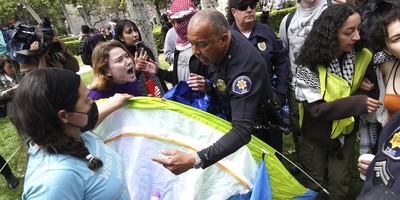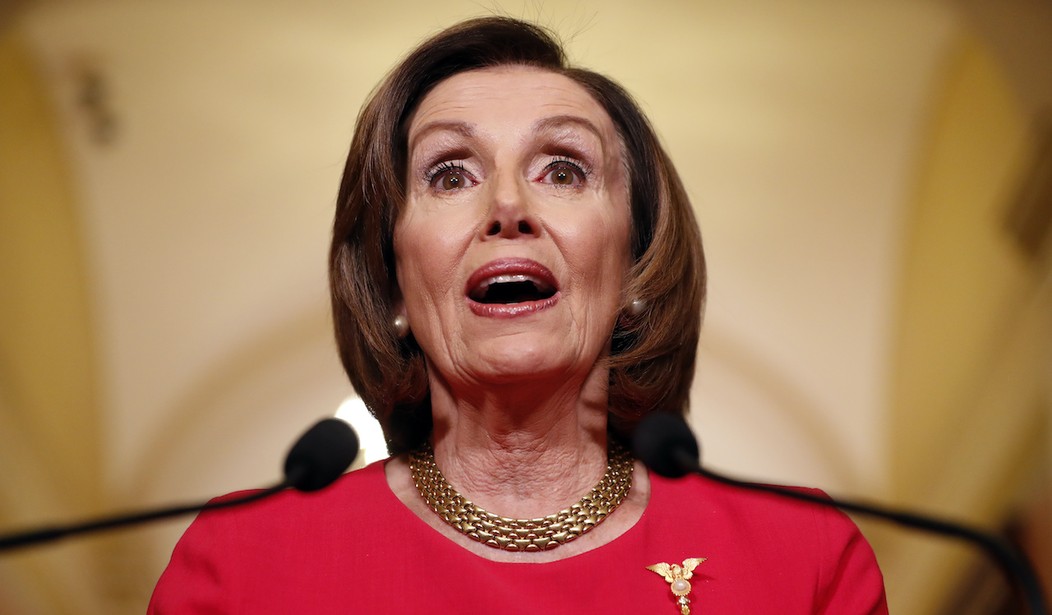As direct action movements, left-initiated political violence and mass street mobilization continue to roil our society, what we’re seeing now is the creation of an Overton window that moves us closer to where we’ll be mentally by the election, as our fractured body politic convulses towards November. Apart from the legitimate grievances and outrage over the death of George Floyd, this moment can also be understood as one along the continuum of the 2020 election and the partisan binary that will continue to overtake us. So in a few months when you hear people say that the election is an existential moment, that everything rides on it, this moment right now is one we’ll look back on after the election to see how that fervor was built.
For example, in the 2016 political season there were a number of episodes that were memorialized in late that year and throughout 2017 as we constructed our narrative of the election. Think of the division, the allegations of Russian interest in dividing us to include trolls apparently organizing protests and counter-protests, the limited, instigated violence at Trump rallies and the organized violence at the inauguration. If these events parallel what we’re seeing now, it’s because this year will make 2016 look tame as our populist and radical era strains against our political institutions. That is not a suggestion that the protests we’re seeing this week are in any way stoked by foreign actors; instead, it’s a suggestion that, of course, we’re having more extreme versions of each of those dramas four years of increased societal division later.
What opposition leadership members the New York Times, Chris Cuomo, and Jimmy Kimmel are doing is providing permission for the use of new and aggressive language that shepherds in a shifting of beliefs. Put more simply, they are normalizing rhetoric bordering on revolutionary, and a political revolution is not out of the question.
Why this is immediately important is that before our recent unrest our deep and abiding division already made a contested election much more likely than at any time in recent history. The left is now prepared to cash in its chips. Their attacks on our institutions that have been allowed to fester for years have turned into true structural weaknesses of the type borne by a truly divided society, and that they are now ready to exploit.
Recommended
The first is the effort for the past twenty years to create a competing metric of legitimacy for the presidency. Many of us have been exposed to this effort, even hearing friends or TV personalities make fantastical statements in recent years such as “Hillary won the popular vote.” Of course, the United States does not, and never has, conducted a popular vote for the presidency, and hence there is no “the popular vote” for her to have won. Note even the inclusion of the word ‘the’ in the phrase when spoken by pollsters and pundits alike. That suggests an implicit credibility for the term, as if it existed as a distinct count we tally. We went from the interjection of the phrase into our discourse as a means of politically harming George W. Bush to, many years of decay and division later, a metastasizing of the concept by a rising Electoral College-denier movement for a competing metric of legitimacy. It will be used to try and tip the scales in the case of a contested election and may even drive a plurality to refuse to accept the results.
The second is the deliberate attempt to undermine public faith and confidence in our federal Supreme Court, more recently referred to by the term asterisking. Many remember that as the explicit strategy of those opposed to the Kavanaugh nomination, but they should remember that years earlier President Obama took extraordinary steps to malign the court. Facing the very real proposition that his landmark legislation was going to be struck down, he deliberately sought to tie the legitimacy of the court to a preferred partisan outcome despite the existence of a clear precedent for that very type of judicial review. To further test the proposition of how successful this effort has been, ask yourself this question: what percentage of the people currently in the streets of our major cities will accept a Bush vs. Gore 5-4 election decision when the fifth vote is provided by Justice Kavanaugh?
The third piece of the effort is the mainstreaming of a narrative of voter suppression. This tactic ignores the nuances and countervailing data on the impact of basic voter verification and voter roll maintenance efforts and re-labels them as part of a conspiracy to suppress minority voters. The main champion of this theory is a politician who draws much from the style of President Trump. Her name is Stacey Abrams. She will take the lead for the Left, potentially while on the ballot, in seeding mistrust of the election results. This is the most direct and aggressive tactic of the three. The goal: to convince the right number of people that if the election doesn’t go their way that it wasn’t conducted fairly, and to sow this doubt both early and widely to lay the groundwork for the immediate contesting of the election in the absence of a landslide.
Analyses of the specific scenarios that may play out if and when we wake up on November 4th not knowing who won are starting to appear in the press and academia. The individual scenarios do deserve attention, especially with such scarce precedents for most. But what’s most important aren’t the specific mechanisms we’ll use to resolve the election. What’s most important is that we are so divided as a nation we may not have the institutional trust or brotherly bonds left to resolve the election with a legitimacy that doesn’t break the federal government.
A worst-case scenario sees the end of the ten weeks between the election and inauguration passing with both candidates still claiming victory and their tribes lined up squarely behind them. In that case, there is a never-before-enacted continuity of government plan that swears in an acting president until the election is finally decided. That official? The Speaker of the House.
























Join the conversation as a VIP Member